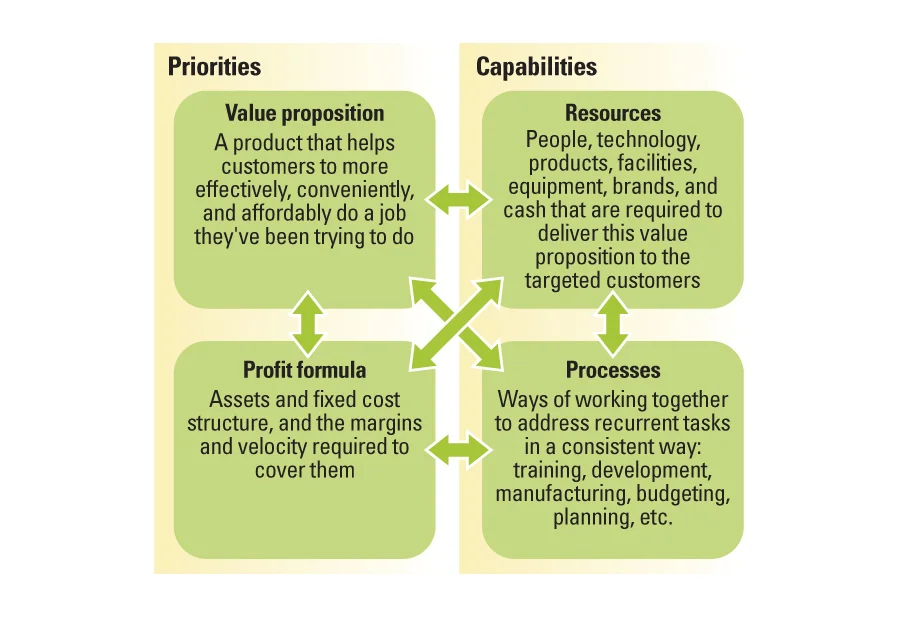How To See If Your App’s Business Model Sucks Before You Waste Years Building It


Bruce Peck
Nov 22, 2022 · 5 min readOk, that may be a bit of an aggressive title for a blog post. But, it is accurate.
I speak with entrepreneurs everyday, some brilliant, some crazy (don’t worry if you are a client of ours, we at least think you are one of the sane ones).
They have passion for their idea, and can’t wait to get started. But it is shockingly rare for people to think through their app’s business model in any depth and that can lead to disaster.
I was one of those people who didn’t think it through thoroughly, and ignored the signs once the natural drawbacks of our model became clear.
What I’m about to share with you took me 3 and a half grueling years to figure out, so if it’s helpful to you, would you consider sharing this post with a friend when you’re done reading?
Could save them a lot of heartache.
#1: Check Your Assumptions
The first thing to think about with your model is, what assumptions are you making in regards to your business drivers? Your business drivers are the things that contribute to your revenue and your businesses overall financial performance.)
For instance with Doorstep (the app we built) our drivers were: price per item x our cut x number of purchasers. Well, when we did the math we saw our cut of each item would be something like $3.60.
To get to even a reasonable place financially with that small of a cut we knew that we would need 10’s of thousands of users… that couldn’t be that hard right?
We assumed it wouldn’t be and were dead wrong. It would have been much wiser for us to identify that as a critical assumption to the success of the business and then test it.
The first test you could run is to see if there are similar apps to yours who have gained that many users quickly.
The second test is to go out and actually try to get downloads (for a fake version of the app) then compare the rate you are able to acquire people against how many people you’d need to run the business, do those stack up?
Some other assumptions that are key to your app’s long term financial picture is the CAC and the CLV.
CAC stands for “Customer Acquisition Cost” it’s how much you need to spend in order to get one more user onto your app. If it cost you $100 to acquire a user who will pay you $20, you are obviously going to have problems.
CLV stands for Customer Lifetime Value, this is how much the user will pay your company over the lifetime of them being a customer. Obviously the larger this number is the better. In the example we gave above, if each user purchases once their CLV would be $3.60.
#2: Make Sure Your Value Proposition Has Value
A value proposition is the clearest benefit that your app offers someone when they decide to give you business. A good value proposition is not incremental, it is transformative for the target person that you are addressing.
Here’s some examples of great value propositions:
- Uber: Tap the app, get a ride
- iPod: 1,000 songs in your pocket
- Slack: Be more productive at work with less effort
Compared with the experience of hailing and paying for a taxi, tapping a button on an app was life changing. Compared with CD’s, the iPod’s value proposition of a 1,000 songs in your pocket was truly magical.
The commonality between all of these value propositions is that they solved a difficult meaningful problem in a simple way.
Many people when they think of their business model, they are only thinking about an incremental problem they can solve much like the early MP3 players that could hold something like 40 songs, and that was just not compelling enough.
If your app does not solve or do something in a way that people find to be truly meaningfully better, you should not build it. If you do you’ll always have the wind in your face instead of at your back.
For more information on finding a great problem to solve check out this article.
#3: Understand How Big Your Potential Market
When we chose to build our app, we did so mainly based off of what we were passionate about: dating and then thought, well everyone in the world dates right?
We didn’t do the research to realize that the dating industry is only about 4.2 billion dollars per year. Which sounds great until you realize that other industries are 100’s of billions of dollars or even a trillion dollars per year.
Small markets that are not growing quickly are often very competitive and difficult places to build businesses since there is not much room for each firm to stake out their territory.
Large markets that are rapidly growing may have more competitors attracted to them, but they also have much more room for firms to grow, since there is so much demand.
Choosing a market that is big or will become big over the next few years is one of the best ways to have the wind at your back.
#4: Truly Understand Your Competition And What Makes Them Successful
When you look at a market and you view who your potential competitors are, you should look with your eyes wide open, both to their strengths and to to their weaknesses. You need to know why people love them, and why people hate them.
There’s a popular business saying that, “You can’t out Amazon, Amazon” essentially meaning that you shouldn’t attack a powerful incumbent in the place of strength.
If you are a Star Wars fan (which I’m not really, but that’s besides the point) you’ll remember that Luke went for the ventilation shaft of the Death Star, not facing it straight on.
You have to know the strengths of your competition to avoid them, and you have to know their weaknesses to exploit them.

#5: What Makes Your App Different?
Once you know what makes your competition successful, and what their weaknesses are you can begin to think through what makes you valuably different.
How do your strengths differ from that of your competitors in a way that is valuable to your customer? For instance, Netflix’s strength was that they had no late fees and a wide selection of titles, compared with Blockbuster’s close proximity to its customers and its readily available new releases.
What you choose to do differently than others shouldn’t be different for the sake of being different, it should be different in a way that makes an impact to your customers.
#6: Map Out Your Business Model
There are many ways to map out your business model, (include one I hate but is wildly popular called the business model canvas.) My preferred way to think about businesses comes from Clayton Christensen.
He maps out a business model into four sections. First, a value proposition which we have discussed above.
Secondly he puts resources which are the people, technology etc. that you need in order to create that value proposition for a customer. For instance, if you think about the iPod value proposition of 1,000 songs in your pocket, the resources needed for that are people to make the iPod, a store to fill the iPod with songs etc.
Third are the processes Which are how your company will work together to bring the product to people in a consistent way. Apple’s product development structure is their process for the iPod.
Finally the profit formula, in the example I gave with Doorstep, our profit formula would be (simplified): (Price per item x Our cut x Number of purchasers) - (CAC + other expenses.)

#7: Come Up With a Bear And Bull Case For Your Business Becoming a Billion Dollar Company
Even if you don’t plan on making your project a billion dollars plus, it’s important to think of a number much larger than what you want your app to become and try to make a case for it.
Why?
Because if the opportunity is not bigger than what you want your business to be, you probably will never reach your goal.
Thinking through what would need to be true to make it a billion dollar company highlights some of the key assumptions and will help you to see how feasible that is. That’s the bull case.
The bear cases is when you look at your business model and ask, “why will this company fail?”
It’s important to do a very harsh analysis of your business and play devils advocate. It’s not to be negative for negativities sake, but it’s to uncover what the realities are that you’d have to overcome to make your business successful. And if your bear case is better than your bull case, you may just save your self years of struggle.